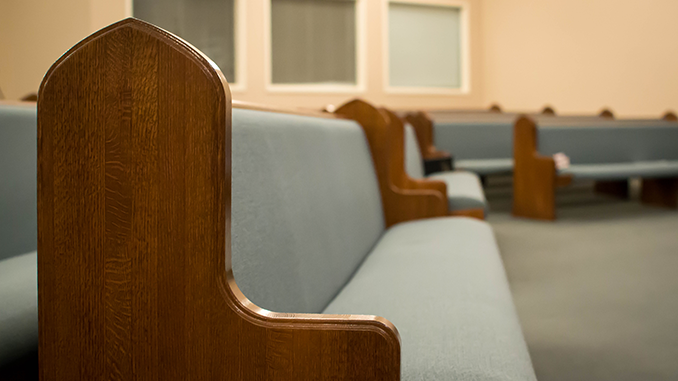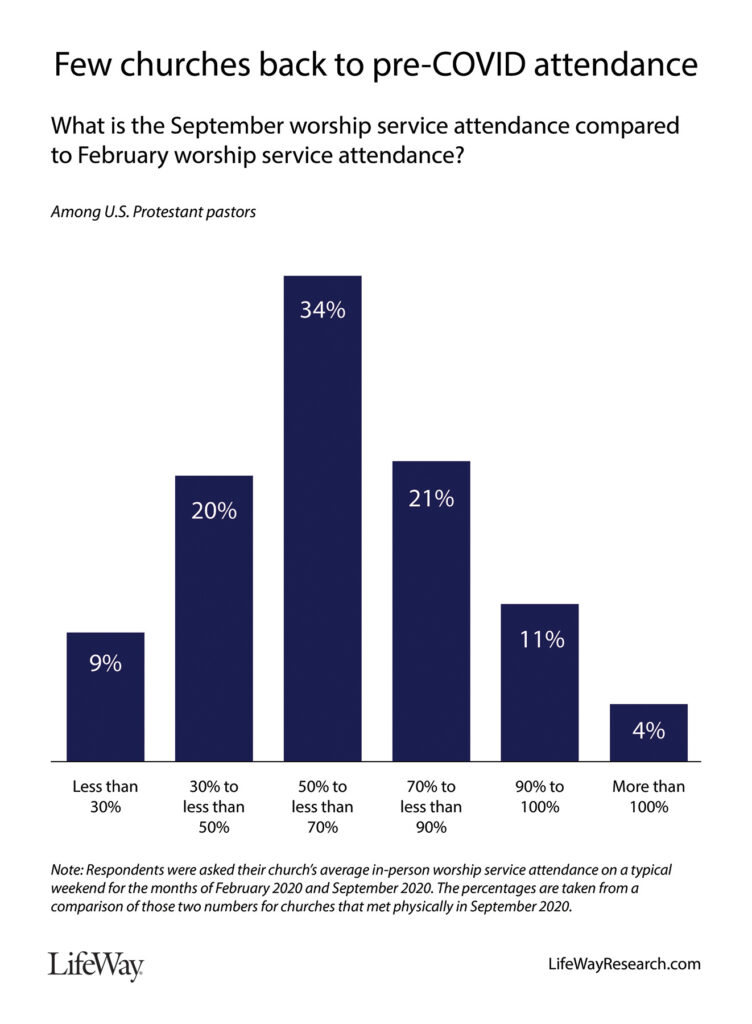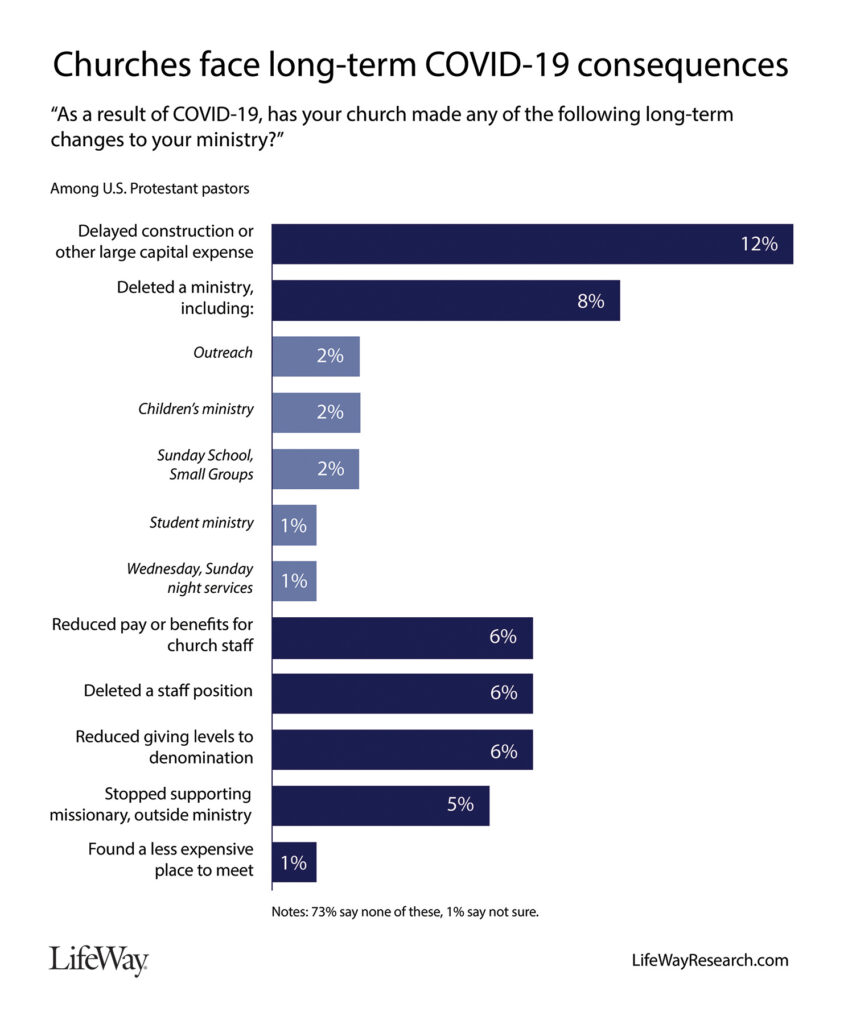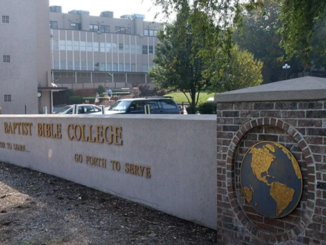
The vast majority of U.S. Protestant churches say they are holding in-person services, but churchgoers have yet to attend in the numbers they did before the coronavirus pandemic struck.
According to the latest survey from Nashville-based LifeWay Research, 87 percent of Protestant pastors in the U.S. say their church met in person in September, while 13 percent did not hold physical gathering.

Since the beginning of March, LifeWay Research has been tracking how COVID-19 is affecting churches. While few Protestant churches gathered physically in April, most began meeting in person again by May with more than 7 in 10 pastors saying they did so in July.
“More and more churches across the U.S. have found ways to meet again, but things are not back to normal,” said Scott McConnell, executive director of LifeWay Research. “The impact of regulations, caution and hardships mean more than 1 in 10 churches are still not meeting in person for any type of worship service. Churches are living organisms, and when more than a third of their members are missing, they are not whole.”
A majority of African American Protestant pastors (60 percent) say their congregations did not meet in person last month.
Mainline pastors (31 percent) are more likely than evangelical pastors (7 percent) to say they did not physically gather in September. Denominationally, Methodists (22 percent) and Presbyterian/Reformed (23 percent) are more likely to say they did not meet in person than Lutherans (12 percent), pastors in the Restorationist movement (10 percent) or Baptists (9 percent).
Pandemic Attendance
Social distancing may be easier in churches, as most pastors say their congregation has less than 70 percent of their pre-COVID crowds.
One in 10 churches (9 percent) say their attendance in September was less than 30 percent of what it was in February before the pandemic spread to the U.S. Another 20 percent say attendance was between 30 percent and less than 50 percent of what it was.
A third of pastors (34 percent) say it has reached 50 percent to less than 70 percent of previous levels. For 1 in 5 (21 percent) attendance is between 70 percent to less than 90 percent.
Few pastors say attendance is close to what it was earlier in the year. One in 10 pastors (11 percent) say September’s attendance was 90 percent to 100 percent of February’s, while 4 percent say their current attendance is more than what it was pre-COVID.
“In most churches, there is definitely room to spread out,” McConnell said. “It would not be surprising for 30 percent or more of a congregation to be in a ‘high-risk’ group needing to continue to take precautions. Since some at-risk members are attending, it only highlights further that there are also churchgoers who have resumed other activities without returning to church.”
Forty-five percent of pastors say their typical weekend worship service attendance was less than 100 prior to the pandemic. Now, almost 3 in 4 pastors (72 percent) find themselves with a worship service crowd below triple digits.
In February, 20 percent of Protestant churches had crowds topping 250 people. In September, only 6 percent drew attendance levels that high.
Pastors of churches that were drawing more than 250 in February are the most likely to say their current attendance is less than 30 percent of what it was earlier this year.
“Since many large churches are not used to functioning with so few people, they may need to reconnect with small churches in their area for ideas. Churches of all sizes have much more in common this year and likely can be learning from each other,” McConnell said.

Long-Term Consequences
Many pastors may not know the extent to which the pandemic has altered their church for months or years to come, but some say it has already brought long-term changThe most common shift pastors had to make due to COVID-19 was delaying a large planned capital expense, with 12 percent of pastors saying they had to put off a construction project or similar expenditure.
Some churches (8 percent) say they were forced to delete a ministry. Overall, 2 percent of pastors say they cut their outreach ministry, 2 percent got rid of their children’s ministry, 2 percent stopped Sunday School or small groups, 1 percent ended student ministry, and 1 percent deleted other service times like Wednesday and Sunday nights.
Church staff were impacted at some congregations, as 6 percent of pastors say their church reduced the pay or benefits for staff members, and 6 percent say they were forced to delete a staff position. African American pastors are the most likely to say they had to cut staff pay or benefits (21 percent) and delete positions (18 percent).
Another 6 percent of pastors say they reduced giving levels to their denomination, while 5 percent stopped supporting a missionary or outside ministry.
Still, almost 3 in 4 Protestant pastors (73 percent) say their congregation has avoided any of these long-term issues to this point.
“Most churches have not had to make drastic cuts to their ministry to this point, but the effects of the pandemic are also not over,” McConnell said. “From pastors’ perspectives, some of the suspended ministry activities already feel long term even if they hope to resume those activities soon.”
For more information, view the complete report or visit LifeWayResearch.com.
Methodology:
The mixed mode survey of 1,007 Protestant pastors was conducted Sept. 2 – Oct. 1, 2020 using both phone and online interviews. For phone interviews, the calling list was a stratified random sample, drawn from a list of all Protestant churches. Quotas were used for church size. For online interviews, invitations were emailed to the LifeWay Research Pastor Panel followed by three reminders. This probability sample of Protestant churches was created by phone recruiting by LifeWay Research using random samples selected from all Protestant churches. Pastors who agree to be contacted by email for future surveys make up this LifeWay Research Pastor Panel.
Each survey was completed by the senior or sole pastor or a minister at the church. Responses were weighted by region and church size to more accurately reflect the population. The completed sample is 1,007 surveys (502 by phone, 505 online). The sample provides 95 percent confidence that the sampling error does not exceed plus or minus 3.4 percent. This margin of error accounts for the effect of weighting. Margins of error are higher in sub-groups.
This article was originally posted on the Baptist Press website and can be found by clicking here.



